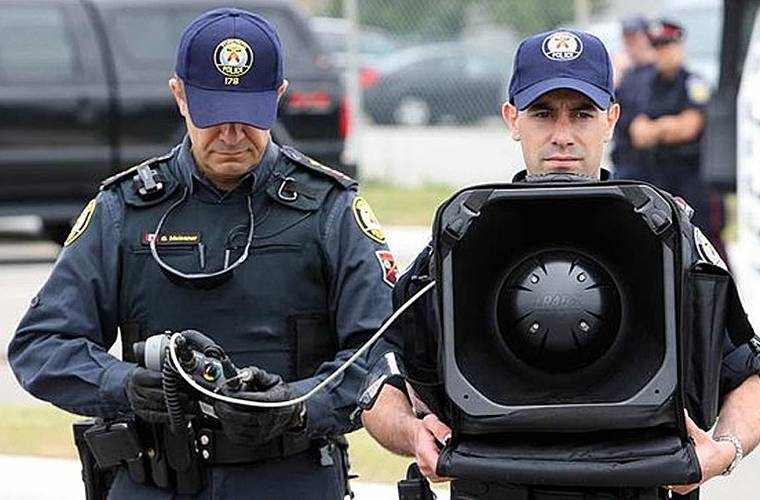HILO — Gov. David Ige said Wednesday concerns expressed in a Tuesday letter by the American Civil Liberties Union of Hawaii that a long-range acoustic device will be used as a “sound cannon” against Thirty Meter Telescope protesters on Maunakea is based on “a lot of misinformation on that equipment.”
The letter, from ACLU staff attorney Wookie Kim to Ige, Attorney General Clare Connors, Board of Land and Natural Resources Chairwoman Suzanne Case and Department of Land and Natural Resources Enforcement Chief Jason Redulla, noted the recent acquisition by DLNR Division of Conservation and Resources Enforcement of a LRAD 100X.
“LRAD technology has been abused in connection with civilian protests and First Amendment-protected activity,” Kim said, noting the use of LRAD on protesters at the 2009 G20 summit in Pittsburgh, during Occupy Wall Street in 2011, in Ferguson, Mo., in 2014, and at the Standing Rock protest to the Dakota Access Pipeline project in 2016-17.
Karen Piper, then a visiting professor at Carnegie Mellon University observing the G20 protests, received a $72,000 out-of-court settlement from the City of Pittsburgh after suffering ear and nerve damage when an LRAD’s so-called “area denial” tone was activated by police a short distance away. The city paid a reported $200,000 in litigation settlements from its handling of the protest.
A federal appellate court denied appeals by two New York police department officers who sought qualified immunity in an excessive force lawsuit after deploying an LRAD 100X during a Black Lives Matter protest in 2014.
The backpack-sized LRAD 100X can broadcast sounds at 137 decibels, according to marketing materials. National Institute for Occupational Safety and Health sound exposure guidelines state hearing loss can be caused by sound levels over 85 decibels.
An article on the technology website Gizmodo described LRAD as a “sound cannon” and stated LRAD systems — developed by the LRAD Corporation in San Diego after the 2000 terrorist bombing of the USS Cole in Yemen — can “broadcast messages and pain-inducing ‘deterrent’ tones over long distances … .”
Kim wrote “whether DLNR actually uses LRAD at (Maunakea), many people will likely be too afraid to exercise their rights to assemble and protest at all, lest they suffer the same kinds of harms that past LRAD victims have suffered.”
“Worse, this chilling effect deters not only protesters, but also journalists, observers, and other bystanders …,” the letter continued.
A July 1 letter by Case to Mateo Caballero, ACLU of Hawaii legal director, said the LRAD 100X purchased by DOCARE will be used “for public address and emergency notifications.”
“LRAD is not a ‘sound cannon,’” Case said. “… The public address and hailing system is not a weapon and is not listed in DOCARE’s use of force continuum.”
The letter, as well as a DLNR document issued June 27 in response to a media release by Kahea, the Hawaiian-Environmental Alliance, called LRAD “a legitimate useful tool for law enforcement in appropriate situations in compliance with law and standard use of force policy.”
During Wednesday’s news conference announcing the start of TMT construction next week, Ige said despite what he called “misinformation” about LRAD, it’s “standard equipment that we have.”
“We use it in emergency response situations where we expect to be able to communicate with many people over some distance,” the governor said. “So it’s standard equipment that we have in emergency management, in the police departments in every county. And certainly, if we have a need to communicate, if there is a large group of people, and we believe that this broadcast device is going to help us, we plan to use it.”
Connors, asked about use of force policies, said, “The LRAD is not intended to be used for that purpose.”
“I don’t believe it’s covered in the use of force policy,” Connors said. “So it’s going to be utilized as the governor identified for the public address capacity and, I’m sure, communication.”
Email John Burnett at jburnett@hawaiitribune-herald.com.

